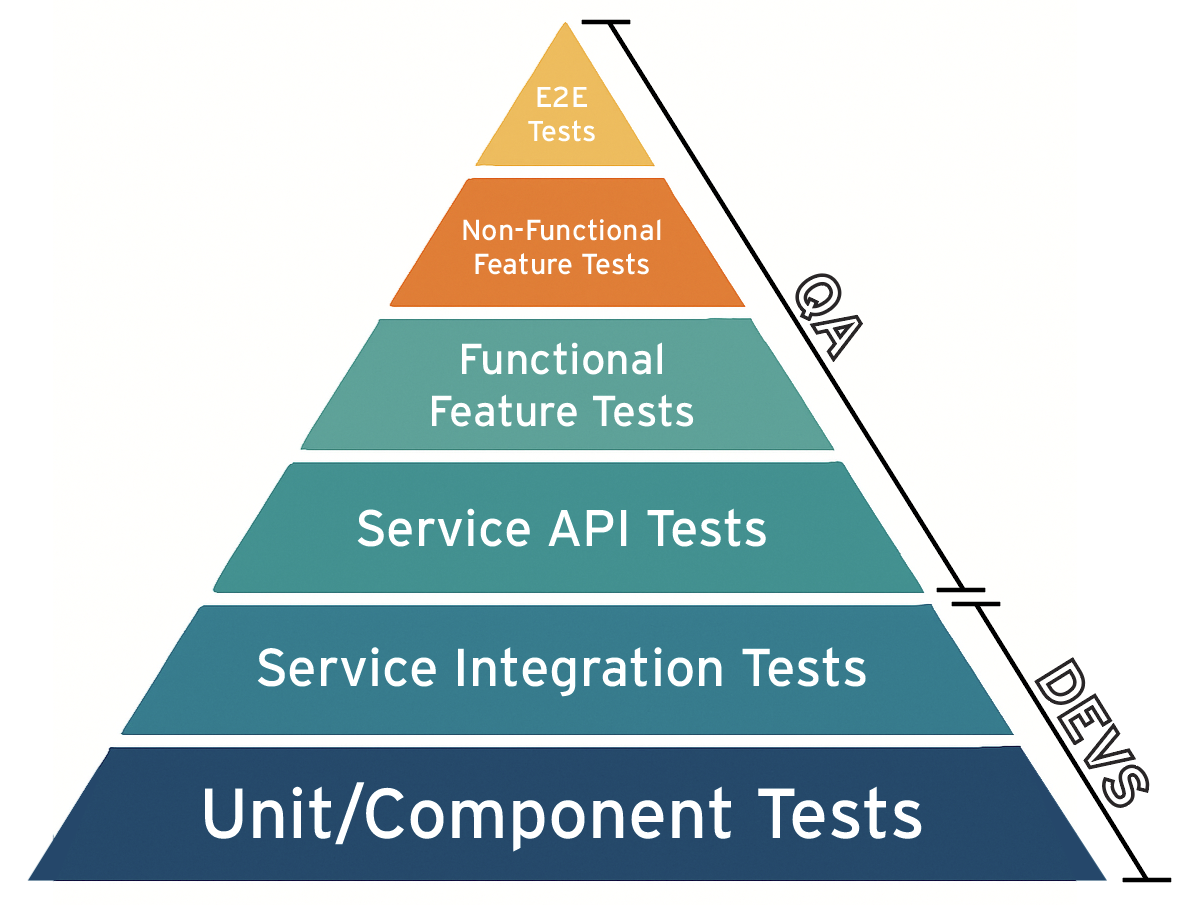Why use automated testing?
Automated testing is the most accurate and cost-effective way to ensure reliable, scalable software. By continuously validating code with every change, it can catch bugs early, reduce regression risks, and accelerate release cycles.
Whether you're building your vision from the ground up, migrating core business applications, or upgrading a legacy system, automated testing provides a stable foundation for a successful project.

The automation pyramid
The decision to automate testing for a given feature requires a careful consideration of applicability, risk, and cost. To decide on the best strategy, Three Rivers Tech consultants often refer to the Automation Pyramid model. This is a layered approach that relies on professional QA experience to determine which tasks are too complex or costly to automate.
01 | Foundational testing
At the base of the pyramid, the focus is on foundational tests that are easy to write, run, and maintain. These "unit" tests exercise the basic functionality of individual components to uncover defects when they are less disruptive and inexpensive to fix. They are typically written and run by developers, but input from the QA team can be useful in rooting out the edge cases that developers may overlook.
02 | Service integration testing
While the foundational unit tests focus on individual components, service integration tests verify that these components work together as expected. These tests also help ensure that changes to lower-level components don't break downstream functionality. Depending on the complexity of the project, they can be written and run by both developers and QA teams.
03 | Service API testing
At this level, testing responsibility shifts from the developers to the QA team, and the focus is on verifying business rules and objectives. While this layer isn't directly consumed by end users, it provides the critical foundation for the application's broader functionality. Ideally, most of the QA tests at this level are automated, since they are still relatively easy to write and maintain, while delivering the most value.
04 | Functional feature testing
The next step is to test the interaction of multiple APIs across a given feature. Automated tests at this level can mimic complex user interactions without an interface, such as adding an item to a shopping cart, checking out, and processing payment.
05 | Non-Functional feature testing
These tests evaluate the performance, security, and usability of an application. Usability testing is notoriously difficult to automate, but performance (stress, load, and volume) and security (penetration and injection) tests are crucial to ensure the application can perform in production.
06 | End-to-end (E2E) testing
At the top of the pyramid, E2E tests focus on validating workflows across the entire application. Automated tests can simulate complex user journeys, but they are often expensive, brittle, and difficult to maintain.







